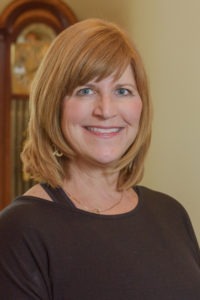The Promise of Voice Tech in Senior Living: A Q&A with Fahad Aziz of Caremerge
A Q&A with Fahad Aziz of Caremerge
Fahad Aziz is CTO and cofounder of Caremerge, an EHR and engagement platform for senior living. Here, he shares his insights on the state of voice technology in senior living communities and how smart speakers can improve resident and community well-being.
IASC: Why do you think voice technology might be useful in the senior living industry?
Fahad Aziz: Strong communication is a central component of independent living care. But effectively communicating with every resident in a community using technology is tricky for a few reasons:
- Residents might have trouble using tech devices that involve hand controls.
- Residents with low vision have difficulties interacting with screens.
- It’s challenging for operators to manage a high quantity of new devices.
Voice assistants can solve these pain points. Smart speakers allow residents to set reminders, ask questions, and receive important information, right from their room. All they have to do is talk to the speaker — there’s no learning curve involved. And fleet management allows a community to easily scale their devices.
IASC: Can you give some real-world examples of ways voice tech could help residents?
FA: Voice assistants enabled for senior living now have capabilities to provide administrative, medical, and emotional support.
On the administrative side, a smart speaker has answers to many of the questions residents might have day-to-day. For example, a low-vision resident at Friendship Village in Kalamazoo, Michigan, asks Alexa for the dinner menu, daily community announcements, or which events he can attend that evening.
As of earlier this year, Amazon Alexa is now HIPAA-compliant, which means it can securely transmit residents’ health information. Thanks to this update, Alexa can help residents manage their healthcare needs — residents can book medical appointments, check on a prescription status, or set medication reminders using their smart speaker.
Critically, though, voice technology can actually help stave off isolation and loneliness in older adults. The simple act of talking to Alexa every day can make a resident feel more connected. Plus, voice assistants can offer a feeling of comfort tailored to a resident’s preferences: they can read the news or play a resident’s favorite music, for instance.
IASC: Give us some background on where this technology is right now. How many communities are actually using voice tech?
FA: Voice technology in senior living is only a few years old, but it’s gaining momentum.
Look at the larger trends in voice technology adoption: NPR and Edison Research’s 2019 Smart Audio Report found that more than 53 million Americans — roughly one in five adults — now own a voice assistant, and 69 percent of this group uses their device every day. In the three years since Amazon debuted the Alexa for widespread use, its adoption has outpaced that of smartphones and tablets.
So we can see that it’s popular, that it appeals to a wide audience. What makes voice technology a game changer for senior living, though, is its user experience, and specifically an innovation called “name-free invocation.”
Essentially, what this means is that residents can ask Alexa questions the way they’d ask their kids. Instead of starting with “Ask my community,” they can just say, “What’s for dinner?”
It’s hard to overstate how big a deal that is. That’s what I meant when I said there’s no learning curve.
And the senior living industry has taken notice. A number of senior living companies across the country have rolled out voice assistant fleets, and many senior living communities are beta testing smart speaker programs.
IASC: What challenges do senior living communities face in deploying this tech? Any tips for overcoming those challenges?
FA: People are always going to be hesitant about embracing a new device. The main challenge for senior living communities looking to adopt voice technology, then, will be showing residents and staff alike how they can benefit from using these devices.
To encourage users past that initial hesitation, communities will need to be thorough in educating residents and staff on best practices for using voice assistants.
Communities can host a workshop for residents with tips and tricks for using their device (which is a great opportunity to bring the community together at the same time). Or they can provide residents with a cheat sheet of the common questions they might ask their smart speaker. Staff can even walk a resident through the setup process and personalize preferences by queuing up their favorite radio station or album, for instance.
IASC: Is it expensive? Is it complicated to get set up?
FA: Good news on both counts: voice assistant fleets are fairly affordable, and the devices themselves require minimal setup.
The time, energy, and money involved in the deployment process will mostly go to training staff and residents to ensure everyone is using them safely and efficiently.
What’s more, because voice assistants rely on network connection, communities will need to invest in a robust IT program to ensure voice assistant fleets can rely on a strong network connection and prevent against hacking and system breaches.
IASC: Are there privacy concerns? Isn’t Amazon “listening in” to what people are telling their Alexas?
FA: This is a very reasonable concern for all Alexa users. In reality, though, these devices are “sleeping” until a user wakes them up, meaning they’re not listening to conversations that you wouldn’t feel comfortable having them hear. Privacy hinges on private interactions, of course, which means that Alexas aren’t well suited for common areas, for instance.
Privacy is especially important for voice technology’s clinical functions. Alexa’s HIPAA compliance means medical data is fully protected, and residents can receive and input relevant information without any worry of a compliance violation.
This is why it’s important to thoroughly train and educate staff on its functions and vulnerabilities. There are a number of best practices to ensure residents’ safety and security — for instance, staff can check to see that the microphone is off when they enter the room.
Plus, Alexa’s fleet management system deletes all stored asks every 24 hours, so no one has to worry about their information getting out.
IASC: How can long-term care community owners make adoption of this technology easier or more useful for residents?
FA: Every senior living community has unique needs and concerns, and voice assistants are by no means a one-size-fits-all solution.
Start slowly with pilot programs, and develop plans for a full integration from there. As communities learn how residents and staff are responding to these devices, constantly ask for feedback — this might not be the right tool for everyone, and that’s OK.
IASC: What’s the future of voice assistants at senior living homes?
FA: The next frontier of senior living voice technology is widespread adoption. For now, it’s an early-stage differentiator, but as more and more tech-savvy Baby Boomers make the transition into senior living, this tech will give senior living communities a competitive edge.
Voice technology developers will continue to improve the device’s interface, too. Features like name-free invocation and tailored activity suggestions, for instance, will continue to improve and make it even easier for residents to get the information they need.
Hopefully, one day soon we’ll see voice assistants become a standard part of senior living communities — and create senior living experiences that are safer, more personalized, and more connected.

Elaine K. Howley is a freelance journalist for various publications. An award-winning writer specializing in health, fitness, sports and history, her work has appeared in numerous print and online publications, including U.S. News, AARP.org, espnW, SWIMMER magazine and Atlas Obscura. She’s also a world-record holding marathon swimmer with a passion for animals and beer. Contact her via her website: elainekhowley.com.
Related Articles
Topics: Featured Articles , Resident Care , Technology & IT











